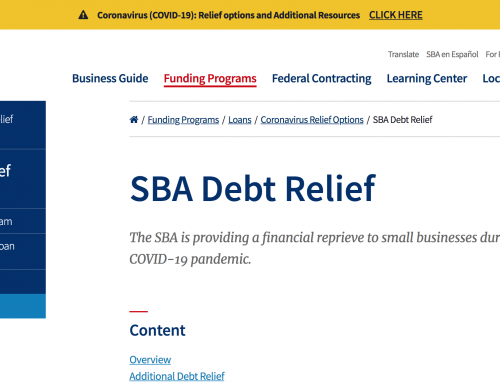Podcast: Play in new window | Download
Subscribe: Apple Podcasts | RSS
Benefits and Limitations
Audio
Benefits and Limitations
Topics
Benefits
Limitations
Balance Sheet
Income Statement
Industry Specific
Benefits
Financial ratios are designed to provide users of information useful metrics to evaluate business activity and health. The results provide a quick and consistent methodology for digging into somewhat complex data and providing helpful insights to facilitate decisions. Projections (educated financial guesses about the future) may also be made based upon historical results and the corresponding ratio. For example, a stakeholder could use the current gross profit margin to project gross profit in the future based upon revenue estimates.
Different stakeholders can benefit from different benefits of ratio analysis. The concepts apply to both internal or intra-company analysis as well as inter-company or peer analysis. Comparing a company’s financial ratios to a peer group is a standard analytical practice that helps give a basis for understanding company-specific ratios. By using a relative comparison to a group of companies operating in similar business lines, an analyst can form conclusions to help decision making. Comparisons are useful when in the same peer group in terms of the products or services offered, size, and structure. A big publically traded software company will be best compared against another big publically traded software company, and so on.
Limitations
Ratios are based on historical information and history is never guaranteed to repeat itself. Historical data can sometimes also include unusual or nonrecurring activities that may not be present going forward. Ratios without context generally have limited value to stakeholders. A video cassette rental company, for example could have strong financial ratios, but be put out of business almost overnight with the release of DVDs and internet streaming. Financial ratios by themselves may not indicate such an abrupt change and therefore must be interpreted along with other circumstances.
Ratios should be combined with other outside data points. Using gross profit margin to predict future cost of goods sold based on revenue, for example, is logical but dangerous if other circumstances are not considered. The ratio itself will not tell the analyst that current prices may have doubled due to supply chain issues or political problems, for example. There have been many companies with strong financial ratios that subsequently failed due to internal and external circumstances.
Ratios provide insights into business metrics, but typically require further analysis to be valuable. A competent financial analyst understands that ratios often create more questions than answers and will increase the scope of research and analysis where appropriate. Financial analysis starts are the numbers, but takes into account other factors outside the balance sheet and income statement. The notes to the financial statements for example can be a very important area of analytical information that provide clues to the accounting methodology, lawsuits, plans, and other required disclosures. Micro and macro political and economic trends will also factor into analysis, such as new law or interest rate changes.
Balance Sheet
Ratios provide information at a single point in time or time period. Ratios that use balance sheet accounts will be at a single point in time, because the balance sheet accumulates transactions up to a point in time. For example, cash is a balance sheet account that is specified at a given date. An analyst must pick a point in time that is relevant for the given analysis, such as December 31, a typical calendar year end. If only one point in time was analyzed the results might not be useful unless compared to several other time periods. Cash, for example, at a given date could fluctuate due to many circumstances such as: financing, investing, or operating changes. Financial analysts will therefore draw on different time periods for testing and use average balances for specific ratios, such as when calculating accounts payable turnover.
Income Statement
Income statement ratios are based on a period of time and the resulting calculations will be heavily dependent on the time period selected. Seasonal businesses such as resorts or gift based businesses will have large fluctuations depending on the time of year. A ski resort may have losses in summer and booming profits in winter. Analysts must therefore understand limitations of ratios based upon the given time period and adjust their conclusions. Several different points in time and time periods for analysis may be used to see how a business is changing over time. Comparing ratios over a number of reporting periods, such as 3-5 years is a standard practice. This is known as trend analysis and may be both represented in numeric and graphical formats. Users will look for standard trends to see whether a business is improving or declining over several different areas of performance.
Industry Specific
The same ratio calculations can have a different meaning or interpretation depending on the target company’s industry. It is therefore important for the user to properly understand specific details about that industry. For example, an accounting firm is not the same as an office furniture manufacturer. The distinctions need to be understood when applying ratios. Ratios are a tool for analysis and likely have limited value unless all facts and circumstances are considered.
Users
Audio
Users
Topics
Users of Financial Ratios
The Analyst
Users of Financial Ratios
Stakeholders are users of financial information with an interest in better understanding a company or organization. Internal users can include division managers and executive officers. External users such as bankers and other lenders rely heavily on financial ratios when making loan and other credit decisions. Investors employ financial ratios when reviewing existing investment positions or evaluating new opportunities. Less obvious parties could include a raw material supplier who may want to gauge the quality of a new client. Ratios can be applied to charitable organization to evaluate their operating efficiency. The type and extent of financial analysis with ratios will be dependent upon the end goals of the users.
The Analyst
Financial analysts serve the role of analyzing financial data in a variety of different capacities. An analyst may specialize in some or more of the following: investment, securities, research, equity, rating, and others. Analysts may work within a company providing internal analytics or outside, using publically available information. Generally they are charged with finding value in their research so that decisions may be made. Internally, analysts may conclude, for example, that revenue is projected to increase and that staffing must be adjusted. An outside analyst may conclude that a particular stock is undervalued and therefore be purchased. Analysts typically, but not always, hold an economics, finance, or business related degree. The Chartered Financial Analyst (CFA) designation may also be obtained when certain testing and work experience requirements are made.
Standard Financial Ratios by Category
Audio
Standard Financial Ratios by Category
Topics
Introduction
Profitability
Debt or Solvency
Operating Performance
Cash Flow
Valuation
Industry Specific
Summary
Introduction
For the purposes of this presentation, ratios will be grouped into main categories. They all serve to use quantitative data to make qualitative assessments.
Liquidity
Liquidity ratios are used to evaluate how well a company is able to meet its short-term financial obligations.
Profitability
Profitability ratios are used to identify the level and quality of earnings.
Debt or Solvency
Debt or Solvency ratios give insight into financial leverage and ability to meet long-term debt obligations.
Operating Performance
Operating Performance ratios identify aspects of operations and efficiency, and insight into the timing of cash inflows and outflows.
Cash Flow
Cash Flow ratios identify relative cash positions.
Valuation
Valuation ratios are concerned with identifying company valuation mostly from an investment perspective.
Industry Specific
Ratios that provide information specific to certain industries that may not apply to all businesses.
Summary
The groupings are designed to be useful, but should not limit the use of a ratio that may provide information across two categories, such as both solvency and operating performance.





Leave A Comment